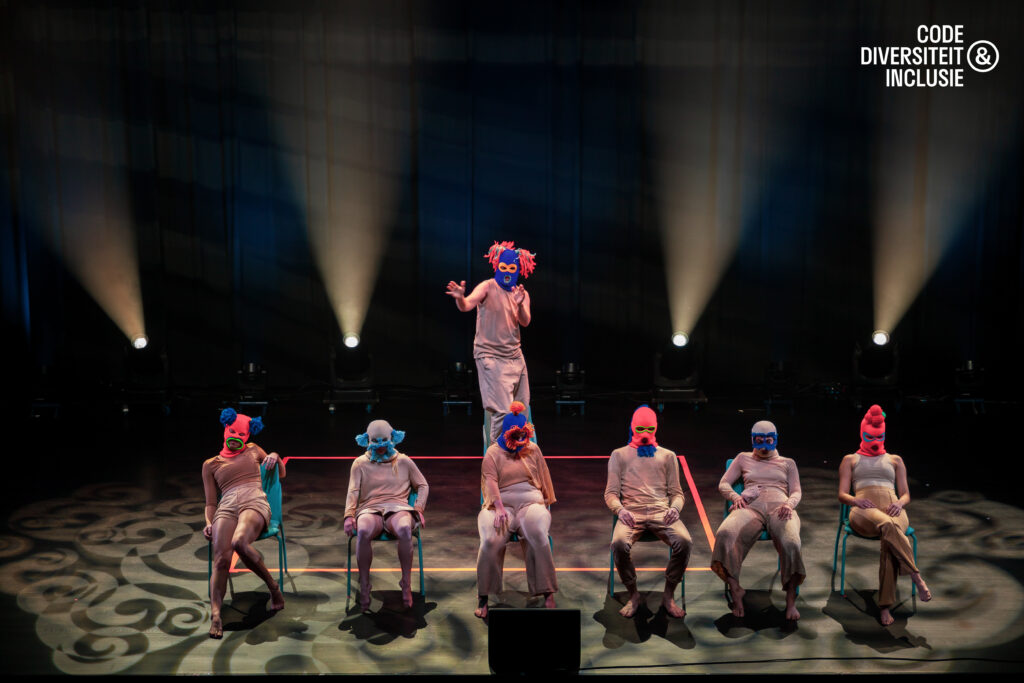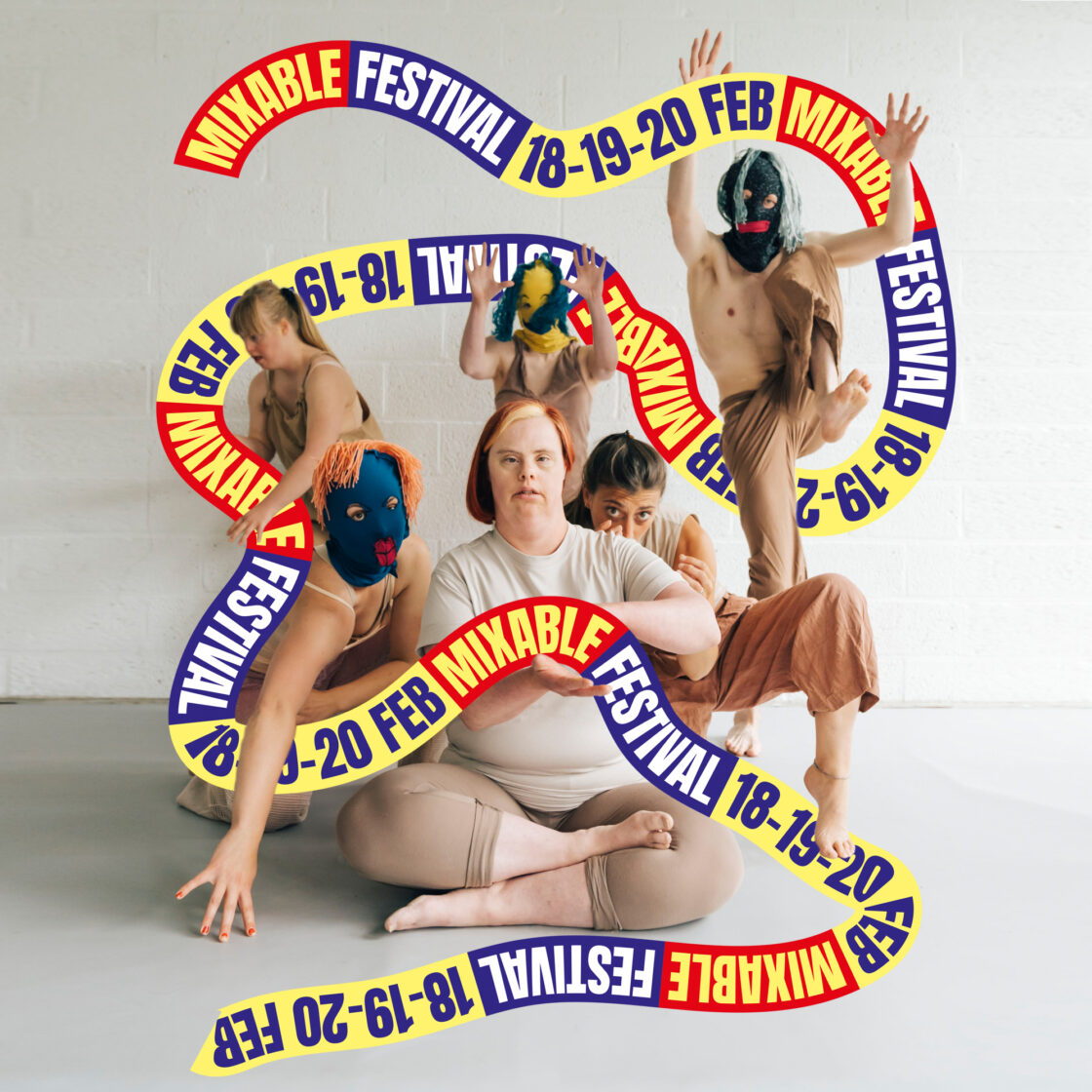Vandaag 18 feb om 15:30 gaat de nieuwe voorstelling van Shifting Faces in première.
Helaas niet met een fysiek publiek en zonder publieks participatie. Dit vinden we allemaal heel jammer, want een groot aandeel van de voorstelling gaat is gemaakt voor een interactieve publieks participatie.
In de voorstelling Shifting Faces verdiept zich in maatschappelijke thema’s rondom de maakbaarheid van de mens. Het stuk roept vragen op over wat ‘normaalheid’ is en hoe synchroon en identiek we als mensen in deze maatschappij kunnen zijn. Non-verbale communicatie speelt een grote rol doordat er onder andere gebruik wordt gemaakt van maskers, waarbij de focus komt te liggen op het lichaam als verteller.
Daarnaast reflecteert het stuk op de transformatie van de mens in het heden en in de toekomst. Wat maakt dat wij mensen alles kunnen maken en onszelf kunnen transformeren tot iets anders? In zijn boek ‘Over normaliteiten en andere afwijkingen’ vraagt Paul Verhaeghe zich af: ‘Waarom worden we zo ongemakkelijk als we oog in oog staan met wiens gedrag of uiterlijk afwijkt van het normale?’ Misiconi merkt dat een persoon met een beperking vaak wordt gezien als ‘anders’. Zeker als deze beperking zichtbaar is. Bij de eerdere voorstelling Masks bleek dat kinderen het vaak eng vonden om een van de dansers met een beperking een hand te geven. Verhaeghe stelt ook: ‘Wat me beangstigt in mijzelf probeer ik onder controle te krijgen bij een ander’. Normaliteit ziet hij als een sturende set van normen en waarden, bepaald en gebaseerd op macht. Het komt vaak voor dat we de mens die niet normaal zijn isoleren.

Today 18 Feb at 3:30 pm the new performance of Shifting Faces will premiere.
Unfortunately not with a physical audience and without audience participation. We all find this very unfortunate, because a large part of the performance is made for interactive audience participation. In the performance Shifting Faces delves into social themes surrounding the malleability of humans. The play raises questions about what “normalcy” is and how synchronous and identical we can be as humans in this society. Non-verbal communication plays a major role because, among other things, masks are used, where the focus is on the body as a narrator. In addition, the piece reflects on the transformation of people in the present and in the future. What makes us humans able to make anything and transform ourselves into something else? In his book ‘On normalities and other deviations’ Paul Verhaeghe asks: ‘Why do we become so uncomfortable when we are face to face with whose behavior or appearance deviates from the normal?’
Misiconi notices that a person with a disability is often seen as ‘different’. Especially if this is a visible limitation. In the single performance Masks it turned out that children often shake hands with a disability. Verhaeghe also states: “What frightens me in myself, I try to control with someone else.” He sees normality as a guiding set of norms and values, determined and based on power. It often happens that we isolate humans who are not normal.
